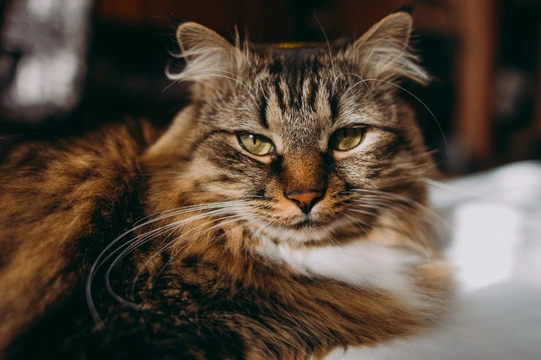
Strokes in Cats - Cerebrovascular Accident
Strokes in cats were thought to be rare, however, more recently and with the advancement in veterinary medicine and the availability of specialist tests, vets can now recognise when a cat might have suffered a stroke. As such it is now known that more animals suffer from strokes than previously thought. Although it may seem frightening, when a cat suffers a stroke, it is often not as devastating as it is in humans and with the right amount of supportive care, a cat can go on to live a happy life.
The Causes
A stroke is referred to as a cerebrovascular accident and it happens when the blood supply to the brain is reduced or seriously interrupted which can result in a cat suffering a stroke. There are, in fact, two types of stroke which are as follows:
- An ischaemic stroke - this is when the blood supply to a cat's brain is suddenly interrupted
- An haemorrhagic stroke - this is when there is bleeding in a cat's brain which is typically caused by the fact a blood vessel has burst
When the brain does not receive the right amount of blood which contains vital nutrients and essential oxygen it cannot function properly. The blood supply also removes any waste products from the brain which is also crucial to its function. If the blood supply is interrupted in any way, it causes a condition known as ischaemia and specific regions of the brain can suffer irreversible damage because the artery has been negatively impacted.
The Causes
When it comes to causes of an ischaemic stroke in cats, these can be due to diseases that cause arteries to narrow or which cause arteries to clog up with material from another part of the body. If a cat suffers a haemorrhagic stroke, it usually means there is blood leaking in their brain or between the skull and the brain. The site of the problem depends on which blood vessel has been negatively impacted. Other reasons why a cat might suffer a haemorrhagic stroke could include the following:
- Lung worm
- Toxins - namely rodent poisons
- Immune-mediated thrombocytopenia
- Congenital clotting disorders
- Kidney disease
- Heart disease
- Thyroid disease
- Cushing's disease
- Vasculitis - an inflammation of the arteries
- An abnormal development of blood vessel found in the brain
- Brain tumour
- Trauma to the head
Signs to Watch Out For
The signs to watch out for when a cat has a stroke are quite different than those seen in people when they suffer a stroke. The most common symptoms of there being something wrong could include the following:
- A head tilt
- Head turn
- A loss of balance
- A loss of sight
- Circling
- Falling down
It is worth noting that these symptoms are also associated with other brain disorders which is why a cat must be examined by a vet so they can make a correct diagnosis sooner rather than later.
Diagnosing the Condition
If a vet suspects a cat has suffered a stroke, they can do so by by physically examining them. However, they would recommend carrying out certain tests to confirm a diagnosis and this could include the following:
- A CT scan
- An MRI scan
- X-rays
- A spinal fluid biopsy
Cats need to be given a general anaesthetic for either a CT or MRI scan and these tests would confirm any changes in a cat's brain and they would help rule out any other underlying causes which includes whether a brain tumour has developed.
Treatment Options
When a cat has been diagnosed as having suffered from a stroke, there is nothing a vet can do to repair any damage caused to their brain. However, it's essential for the underlying cause of the problem to be identified to prevent a cat from suffering another stroke. If the vet finds the cause, they would carry out the correct treatment to remedy the health issue if possible. Cats need to be given a lot of supportive care once they have suffered a stroke, but in general they cope very well providing not too much damage has occurred to the brain.
Testing for Strokes
There are a multitude of tests available to vets which would help confirm a diagnosis. This includes the following tests:
- Blood tests - this helps establish whether a cat's kidney, liver and other vital organs are working as they should
- A urinalysis - this also helps establish whether a cat's kidney, liver and other vital organs are working as they should
- X-rays
- MRI scan
- CT scan
- Tissue biopsy
Prognosis
As previously mentioned, strokes cannot be treated as such, but most cats recover well within a short time unless a vital part of their brain has been negatively impacted. As such, the prognosis for a cat when they have suffered a stroke depends on the underlying cause and whether the problem is treatable, it if is then cats can go on to lead full and happy lives.



